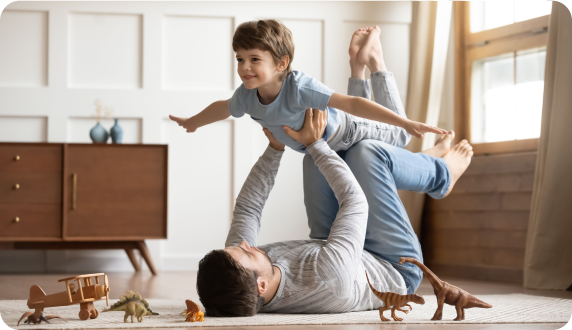Library - Page 2
Registered on ClinicalTrials
Post -infectious asthenia in the era of new coronavirus infection: approaches to drug correction
Authors:
E.Yu. Ebzeeva, O.D. Ostroumova
Federal State Budgetary Educational Institution of Additional Professional Education "Russian Medical Academy of Continuing Professional Education" of the Ministry of Health of the Russian Federation
The importance of identifying and diagnosing signs of brain damage to arterial hypertension
Authors:
T.M. Ostroumova, O.D. Ostroumova
Mexidol® and Mexidol® Fort 250 as part of the sequential therapy for cognitive disorders in comorbide patients with joint pathology against the background of arterial hypertension and coronary heart disease
L.N. Eliseeva, S.V. Kartashova
FSBEI in Kuban State Medical University of the Ministry of Health of Russia, Krasnodar
Biochemical and morphometric methods for evaluating cognitive disorders in patients with type 2 diabetes mellitus
Author:
Samoilova Yu.G., Leiman O.P., Tonskoye O.S., Matveeva M.V., Kudlai D.A., Oleinik O.A., Zhukova N.G., Ratkin K.R., Fimushkina N.Yu.
Place of publication:
Cardiovascular therapy and prevention, 2020; 19 (4)
Modern drug therapy of post -infectious asthenia. With renewed strength
Author:
V.N. Shishkova
GBUZ "Center for the Pathology of Neurorebilitation Speech" DZ Moscow, Moscow, Russia
Place of publication:
New therapeutic journal "Non Nocera" No. 4, 2019
Problems of pharmacotherapy of elderly patients
Author:
Ushkalova E.A.
Place of publication:
Neuronyus issue No. 4 (42) 2018
Cognitive disorders in patients with arterial elderly and senile hypertension
Author:
Sharashkina N.V., Ostapenko V.S., Tkacheva O.N., Runikhina N.K., Kotovskaya Yu.V., Mkhitaryan E.A., Lysenkov S.N.
Place of publication:
Cardiovascular therapy and prevention, 2017; 16 (3)
A new direction in the assessment of adherence to treatment is an emphasis on geriatric syndromes
Author:
Chukaeva I.I., Larina V.N., Karpenko D.G., Larin V.G.
Place of publication:
Cardiovascular therapy and prevention, 2017; 16 (3)
The main pathogenetic mechanisms of the development of the vascular pathology of the brain with atherosclerosis and metabolic syndrome: search for correction routes
Authors:
Antonova K.V. , Lagoda O.V. , Propakurazhev A.A. , Tanashian M.M.
Volume 10. No. 2 2016
Correction of pathological conditions caused by insulin-resisted hyperglycemia
Authors:
Solovyova E.Yu.*, Karneev A.N. , Tyutyumova E.A.
*GBOU VPO “Russian National Research Medical University named after N.I. Pirogov ", Moscow, Russia
Journal of Neurology and Psychiatry, 9, 2016
Features of the development of neurological complications in patients with type 2 diabetes and metabolic syndrome: the possibility of correction and prevention
Author:
V.N. Shishkova
GBUZ "Center for the Pathology of Neurorebilitation Speech" DZ Moscow, Moscow, Russia
Place of publication:
therapeutic archive, 1, 2015
The effect of Mexidol on the level of neurogenesis markers in acute cerebrovascular disorders in the experiment
Authors:
A.V. Schulkin, I.V. Chernykh, Yu.V. Abalenikhina, M.V. Gatsanoga, O.A. Andryushin, N.A. Kruzhalov, E.N. Yakusheva
FGBOU in the Ryazan State Medical University named after Academician I.P. Pavlova "of the Ministry of Health of Russia, Ryazan, Russia
Place of publication:
Journal of neurology and psychiatry named after S.S. Korsakova
2025, vol. 125, No. 2, p. 107–112
Neuroprotective therapy with age -related macular degeneration
Authors:
Vlasova A.S. 1*, Petrov S.A. 1*, 2*, Renzyak E.V. 1*, 3*
1* ANCOO DPO “West Siberian Institute of Postgraduate Medical Education”, Tyumen, Russia;
2* FSBUN FIC "Tyumen Scientific Center of the Siberian Branch of the Russian Academy of Sciences", Tyumen, Russia;
3* of the Khanty-Mansiysk Autonomous Okrug-Ugra "District Clinical Hospital", Khanty-Mansiysk, Russia
Possibilities of neurocytoprotheiation during reperfusion therapy
Authors:
Schukin I.A. 1*, 2*, Koltsov I.A. 1*, 2*, Fidler M.S. 1*, Glukhava A.P. 1*
1* FGAOU in Russian National Research Medical University named after N.I. Pirogov »Ministry of Health of Russia
(University Pirogov), Moscow, Russia;
2* FSBI "Federal Center for Brain and Neurotechnology" of the Federal Medical and Biological Agency of Russia, Moscow, Russia
Assessment of the effectiveness of ethylmethylhydroxypyridine of succinate with alcohol withdrawal
Authors:
Yakusheva E.N., Schulkin A.V., Abalenikhina Yu.V.
THE INFORMATION IS INTENDED FOR HEALTHCARE AND PHARMACEUTICAL PROFESSIONALS. THIS INFORMATION IS NOT INTENDED AS A SUBSTITUTE FOR MEDICAL ADVICE.
Source of photos and images Shutterstock.com














